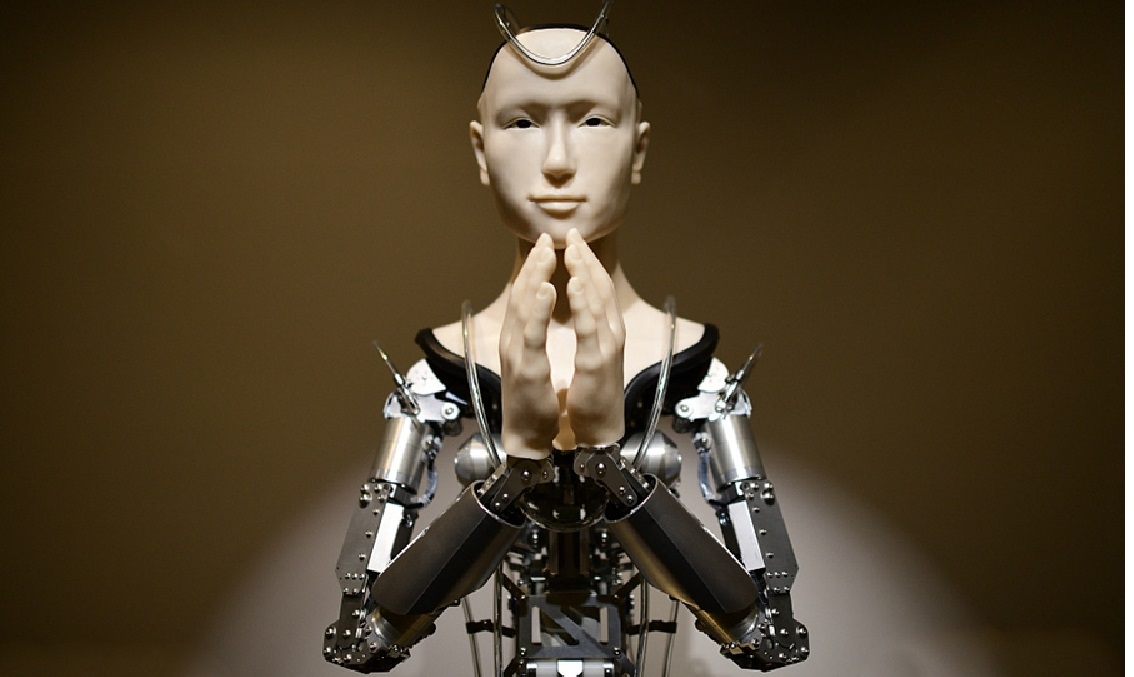
Everyday Humanoids
Many Westerners know that, in the ancient Sanskrit language, Buddha means an “enlightened one.” A Bodhisattva is not a Buddha but, rather, a being who is capable of achieving Nirvana – a state characterized by freedom from or oblivion to pain, worry, and the external world and, perhaps more importantly, freedom from the endless cycle of personal reincarnations – but delays doing so through compassion for suffering beings.
In other words, Bodhisattvas could become Buddhas, but opt-in for additional reincarnational appearances on Earth so they can provide spiritual help to others who seek enlightenment but are further from it in terms of their consciousness.
Ancient Indian deities usually have many names and often represent multiple aspects of the same ethical quality. Kannon Bodhisattva is portrayed both as the male Kannon Bosatsu, Lord of Compassion, and as the female Kannon Bodhisattva, Goddess of Mercy.
Statues of Kannon are found throughout Japan, especially at temples. The slender figure either appears in a female form or one that is somewhat androgynous or “metrosexual.”
“Kannon is extremely popular in Japan, mostly because of her efficacy at answering prayers and the many miracles attributed to her, and many temples are named after her, Kannon-ji, as well as many temples having a Kannon Hall enshrining her along with whatever main deities are enshrined there,” according to Japan Visitor.
English and Chinese subtitles of Mindar’s words about the Heart Sutra and humanity were projected on a wall as background music played.
Sutras are ancient and medieval texts from India. The Heart Sutra is one of the key scriptures that make up the Perfection of Wisdom Sutras. This collection of aphorisms is most famous for the statement, “Form is empty.”
Buddhists believe that understanding the Heart Sutra can “overcome all fear, destroy all wrong perceptions and realize perfect nirvana.”
With Mindar minding the temple, no spiritual seeker will ever have to wait for instruction and guidance since the android requires neither sleep nor sustenance. No breaks and no downtime for this teacher, with the exception of periodic or emergency maintenance.
Mindar is an android that is not equipped with AI (artificial intelligence) and therefore does not “learn” from experience. Everything the robotic, humanesque machine says is pre-recorded. Every gesture was programmed in and timed for effect.
Tensho Goto is the chief steward of the Kodaiji Temple, which is located in the Higashiyama Ward of Kyoto. He shared the thinking behind building a robotic religious instructor:
“If an image of Buddha speaks, teachings of Buddhism will probably be easier to understand. We want many people to come to see [the robot] to think about the essence of Buddhism.”
Mindar, built by Tokyo-based A-Lab Company, stands just under 6-ft 5-in tall (6195 centimeters) and weighs in at 132 pounds (60 kilograms). Its body is constructed mainly out of aluminum with silicone face and hands. (Silicone is a synthetic, flexible, rubber-like plastic.)
The public gets a chance to see and hear Mindar preach tenets of Buddhism during a showing between March 8 and May 6. The monastic staff at the 400-year-old Kodai-ji Temple hope that Minar will appeal to and bring in a new and younger audience.
The Japanese government is getting its citizens used to seeing humanoid robots in everyday places – and to accept them as equals. In November 2017, a Japanese city issued an official residency ID card to a machine built to look like a human.
Shibuya Mirai is a “sophisticated robot” made to look like a human boy who wanders around the streets of Shibuya chatting people up. “Mirai” is the Japanese word for “future.” This chatbot collects gossip and other residential information and transmits it all back to the municipal database:
As covered by Newsweek in November 2017, Mirai has “hobbies” which are “taking pictures and observing people. He loves talking with people. Please talk to him about anything.”
In September 2018, Kentaro Yshifuji, CEO of robotics company Ory Lab, “announced the development of a waiter robot at a cafe in Tokyo that can be remotely controlled by physically-disabled human employees.”
In December 2018, robots were deployed at Japanese railways to act as security guards, monitoring areas for lost belongings or suspicious objects – or people. Maki Sone, representing Seibu Railway (a private railway operator in Tokyo and Saitama Prefectures), said that the mechanical guard is useful because it “cruises” around the station:
“There are many columns [pillars] at the station, and this is why the employees may fail to notice something. The robot has to see what is happening as quickly as possible and notify the staff. Moreover, it notifies the staff if it notices some lost belongings at the station.”
The patrolling robot takes the workload off other railway employees. All Japan is anticipating huge crowds during the 2020 Summer Olympics, and the government is getting ready with new technologies such as humanoid androids to add to the staff, be it at the local train station or the neighborhood temple.
But will the day come when humanoid androids are so life-like that we can’t tell the difference between an emotionless machine and a living, breathing human being?
This seems to be the direction Japan is heading toward. The next logical step would be to add AI to humanoid androids and put them into roles served now by humans.
Only time will tell how adding robots to their population will impact Japan and other nations who follow suit. Say hello to the Brave New World where, experts such as the president of Seiko Epson assure us that robots will always need humans to program and operate them, no matter how smart or autonomous they become:
For the sake of Kannon Bodhisattva, compassion, and mercy, let us all hope so.

Recent Comments